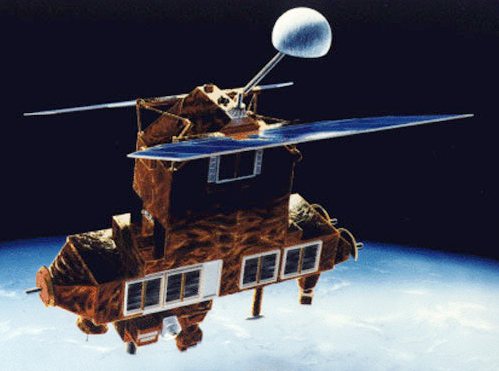The sky is falling

Maybe Chicken Little was right about the sky falling when the Earth Radiation Budget Satellite (ERBS), one of the longest spacecraft missions in NASA history, came back to Earth. ERBS was created to gather data on Earth’s Radiation Budget (the absorption and reflection of energy from the Sun) to study weather patterns and climate conditions.
“The ERBS solar monitor is an active cavity radiometer similar in design to the Active Cavity Radiometer Irradiance Monitors (ACRIM) which have flown on the (…) Atmospheric Laboratory for Applications and Science (ATLAS) spacecraft missions,” National Oceanic and Atmospheric Administration said.
ERBS was launched on Oct. 5, 1984, with the expectation of gathering two years worth of data, but the insight it gave NASA on the Earth’s Ozone Layers kept it in action for twenty one years. ERBS showed fossil fuel emissions and Chlorofluorocarbons’ (CFCs) gaseous effect on the Ozone Layer’s depletion until its retirement in 2005. This data was used to draft the United Nations Montreal Protocol in 1987, which ended the use of CFCs and limited other destructive gases. The Montreal Protocol has become one of the most influential and pivotal international environmental protection agreements.
“The satellite was extremely beneficial to the environment as a whole. Stopping the emissions of harmful CFCs in its tracks protected the Ozone Layer from even more damage done by said toxins. It was a step in the right direction in the effort to protect and prevent the further distraction of this vital layer in our atmosphere,” Alayna Roper, senior, said.
It was unknown what ERBS’s specific landing location would be, which caused South Korea’s science ministry to send out a warning that the satellite might arrive somewhere in Korea. Although, there was not much concern because NASA and the science ministry said that most of ERBS mass would be lost when it burned up during re-entry. ERBS finally re-entered Earth’s atmosphere on Jan. 8, 2023, at 11:04 p.m. (Eastern Time), landing in the Bering Sea near Alaska.
“NASA expected most of the satellite to burn up as it traveled through the atmosphere, but for some components to survive the reentry,” NASA said.
For more information on ERBS, one can view the link above or visit the Mission Directorate.

Hello! My name is Ashlin, and I am currently a senior at Etowah! It is my first year on staff and I am so excited for this year! I am a Track and Cross...









